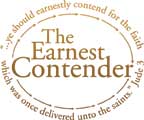Communion (Part 2)
With the background of the Jewish celebration of Passover in mind, please consider the following: Jesus Christ was born and lived under the law (Galatians 4:4). Christs ministry on earth occurred during the dispensation that began with the Mosaic Law on Mount Sinai. The Old Testament dispensation known as the dispensation of the Mosaic Law ended after Christ’s death, burial and resurrection. Therefore, Jesus observed the yearly Passover required in the law.
Jesus took bread, and blessed it, and brake it, and gave it to the disciples... (Matthew 26:26)
Here is an interesting fact: Among the many symbolic aspects of the Passover, is the eating of the “Aphikomen.” Early in the meal, the papa takes the middle matzo of three unleavened cakes of bread, breaks it, and after pronouncing a benediction, distributes half among the family. The second half is hidden until the end of the meal. The first child who finds the “Aphikomen,” gets a present and this is thought of as a great privilege. To this day, Jews use the word “Aphikomen,” the only Greek word in the entire celebration. When they hide this piece of bread, it could symbolize that the gospel is hidden from their eyes, due to their pride in religion. A good knowledge of the passover and its traditions will deepen one's appreciation of the Lord's table. I encourage my readers to learn more about this. The Gospel in the Feasts of Israel by Victor Buksbazen is a greatly beneficial book for this. One may also read these other sources here, here, here, and here.
The red wine on the Passover table brings to memory the blood of the lamb whereby the children of Israel were saved from death. This puts His statements regarding the bread and the cup in the context of a substitutionary death that brought deliverance. On the night of the Passover celebration, in the midst of the meal, Jesus must have startled His disciples when He took the bread and broke it. Obviously, observing plain normal hermeneutic, He was not saying that this bread was His body. He was giving us a symbol to remember Him and show the disciples what was to happen in His body.
“…the Lord Jesus the same night in which he was betrayed took bread: And when he had given thanks, he broke it, and said, Take, eat: this is my body, which is broken for you: this do in remembrance of me. After the same manner also he took the cup, when he had supped, saying, this cup is the new testament in my blood: this do ye, as oft as ye drink it, in remembrance of me. For as often as ye eat this bread, and drink this cup, ye do show the Lord's death till he comes.” (1Cor. 11:23-26)
Baptists believe that the two ordinances of Baptism and Communion are symbolic or pictures of Christ’s death, burial and resurrection. I personally feel that Communion should be practiced once a week, but with large congregations, this is just not practical. The Bible doesn’t specify how often, but it does say that as often as we do this, to remember.
In His fellowship,
Brother John
Jesus took bread, and blessed it, and brake it, and gave it to the disciples... (Matthew 26:26)
Here is an interesting fact: Among the many symbolic aspects of the Passover, is the eating of the “Aphikomen.” Early in the meal, the papa takes the middle matzo of three unleavened cakes of bread, breaks it, and after pronouncing a benediction, distributes half among the family. The second half is hidden until the end of the meal. The first child who finds the “Aphikomen,” gets a present and this is thought of as a great privilege. To this day, Jews use the word “Aphikomen,” the only Greek word in the entire celebration. When they hide this piece of bread, it could symbolize that the gospel is hidden from their eyes, due to their pride in religion. A good knowledge of the passover and its traditions will deepen one's appreciation of the Lord's table. I encourage my readers to learn more about this. The Gospel in the Feasts of Israel by Victor Buksbazen is a greatly beneficial book for this. One may also read these other sources here, here, here, and here.
The red wine on the Passover table brings to memory the blood of the lamb whereby the children of Israel were saved from death. This puts His statements regarding the bread and the cup in the context of a substitutionary death that brought deliverance. On the night of the Passover celebration, in the midst of the meal, Jesus must have startled His disciples when He took the bread and broke it. Obviously, observing plain normal hermeneutic, He was not saying that this bread was His body. He was giving us a symbol to remember Him and show the disciples what was to happen in His body.
“…the Lord Jesus the same night in which he was betrayed took bread: And when he had given thanks, he broke it, and said, Take, eat: this is my body, which is broken for you: this do in remembrance of me. After the same manner also he took the cup, when he had supped, saying, this cup is the new testament in my blood: this do ye, as oft as ye drink it, in remembrance of me. For as often as ye eat this bread, and drink this cup, ye do show the Lord's death till he comes.” (1Cor. 11:23-26)
Baptists believe that the two ordinances of Baptism and Communion are symbolic or pictures of Christ’s death, burial and resurrection. I personally feel that Communion should be practiced once a week, but with large congregations, this is just not practical. The Bible doesn’t specify how often, but it does say that as often as we do this, to remember.
In His fellowship,
Brother John


